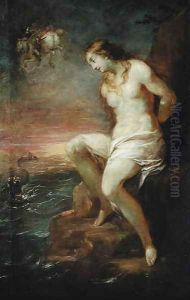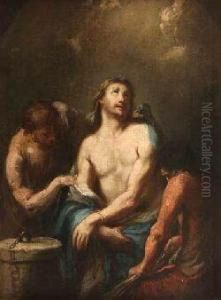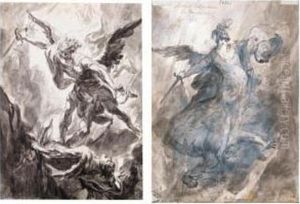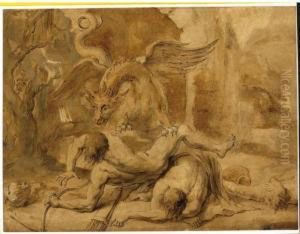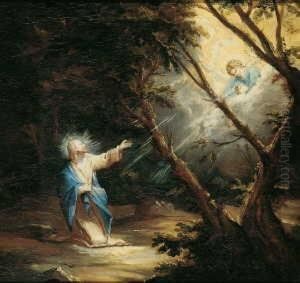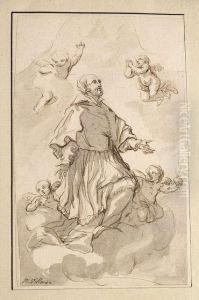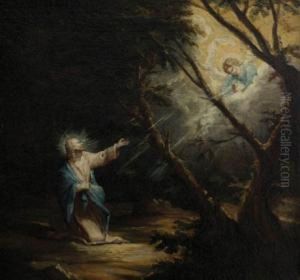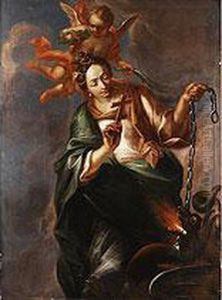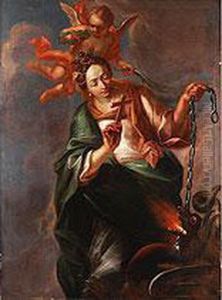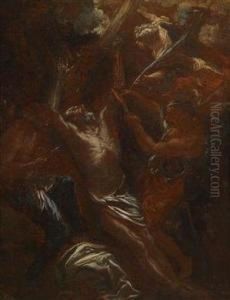Michael Leopold Willmann Paintings
Michael Leopold Willmann, born in 1630 in Königsberg (now Kaliningrad, Russia), was a pivotal figure in Central European Baroque painting. Often referred to as the 'Silesian Rembrandt,' Willmann's oeuvre reflects a deep engagement with the dramatic intensity and emotional depth characteristic of Baroque art, while also incorporating influences from his study of the Dutch and Flemish masters. His early life in Königsberg, where he was born into an artistic family, laid the foundation for his future career. His father, Georg Wilhelm Willmann, was also a painter, providing Michael with an initial education in the arts before he embarked on further study and travel across Europe.
Willmann's journey as an artist took him to various cultural hubs of the time, including the Netherlands, where he was profoundly influenced by the works of Rembrandt and other Dutch masters. This experience shaped his style, which combined the rich chiaroscuro and emotional depth of Rembrandt with the grandeur of Italian Baroque painting. In 1660, Willmann settled in Wrocław (Breslau at the time), then part of the Kingdom of Bohemia, now Poland, and later moved to Leubus (now Lubiąż, Poland), where he became court painter to the abbot of the Cistercian monastery, a position that provided him with significant commissions that allowed his talents to flourish.
Throughout his career, Willmann proved himself to be not only a prolific painter of religious subjects, which were highly sought after in the Counter-Reformation era, but also a skilled creator of allegorical scenes, landscapes, and portraits. His work demonstrates a keen ability to convey spiritual and moral themes through a sophisticated use of light, shadow, and composition. Among his most famous works are the ceiling frescoes in the church of the Abbey of Lubiąż and the altarpieces in the Church of Peace in Jawor, both of which are considered masterpieces of Silesian Baroque art.
Willmann's influence extended beyond his own artistic production. He ran a large workshop that trained numerous artists, contributing to the dissemination of his style and techniques throughout the region. His legacy is seen not only in the widespread presence of his works in Central European churches and collections but also in the continued appreciation of his skill in blending the spiritual with the visually compelling.
Michael Leopold Willmann passed away in 1706 in Lubiąż, leaving behind a body of work that continues to be celebrated for its contribution to the Baroque movement in Central Europe. His artistic vision and mastery of the Baroque style have cemented his place as one of the era's most important figures, earning him a lasting reputation as the 'Silesian Rembrandt.'
